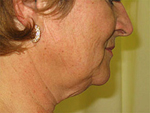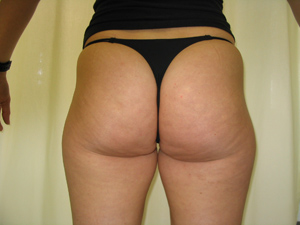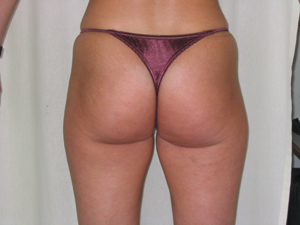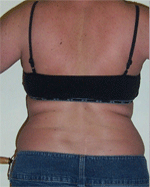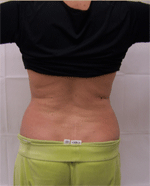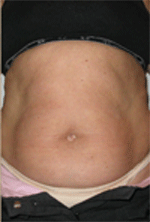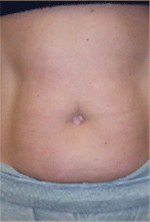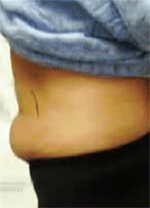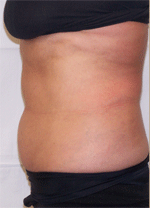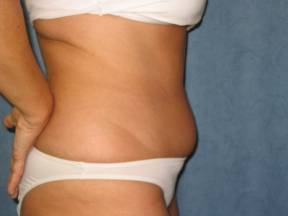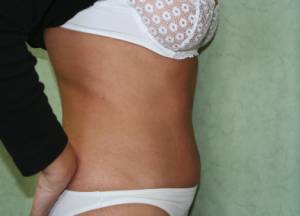| LIPODISSOLVE® FAQs |
|
1: What is LipoDissolve®?
2: How do I know if LipoDissolve® is right for me?
3: How does LipoDissolve® work?
4: How effective is LipoDissolve®?
5: Will the fat return after LipoDissolve® treatment?
6: Can results become uneven?
7: Which part of the body can be treated with LipoDissolve®?
8: I can’t find a doctor in my area. Can I do the injections myself?
9: Is LipoDissolve® supported by research?
10: Is LipoDissolve® safe?
11: What are the side-effects?
12: Do the injections hurt?
13: How long is the downtime or recovery?
14: How many treatments will I need?
15: How long does it take to work?
16: Where are the doctors trained in LipoDissolve®?
17: How does LipoDissolve® differ from mesotherapy?
18: Can muscle be dissolved with Lipodissolve® ?
19: Where should I go to get Lipodissolve® now that there are so many places that offer it?
20: How long has the doctor been doing the procedure?
21: What about certification?
22: Why is experience so important?
23: If a doctor delegates the procedure to a nurse or another allied medical person, what are their qualifications?
24: How much can one get treated in one session?
25: How does the amount treated compare with other spas and Lipodissolve® providers?
26: Why can’t the treatment be spread out over a larger area, or split between areas?
27: Why does it take 3 or 4 treatments per area to get the results?
28: Why do we perform tape measurements, weights and photodocumentation at every visit?
29: Some of the other Lipodissolve® centers advertise associations with plastic surgeons or other doctors. Does this matter?
30: Are there any long term studies on Lipodissolve®?
|
|
What is LipoDissolve®? |
|
LipoDissolve® is a series of micro-injections developed to dissolve fat deposits of the face and body.
It was originally discovered in Italy in the early 1980’s and modified and improved in 2002 as a more effective
treatment option for treating localized fat reduction without surgery.
LipoDissolve® is a procedure of injecting primarily a mixture of two naturally occurring chemicals, phosphatidylcholline and deoxycholate, into the skin.
Phosphatidylcholine is made out of two fatty acid tails connected to a choline molecule. Phospatidylcholine, also known as lethicin, is one
of the components of soybean oil. It is also a lipid or fat that constitutes 70% of cell membranes in humans. Deoxycholate is the most common
occurring bile acid and its job is to help dissolve fats we consume. Normally, both are secreted by the gallbladder when we eat a high fat meal
to aid digestion.
|
How do I know if LipoDissolve® is right for me? |
|
You may be a candidate for LipoDissolve® if you have small areas of fat deposits that need reduction,
or you are unable to undergo liposuction. During your consultation the physician will evaluate your condition and profile, and decide
whether LipoDissolve® is the right solution for you.
|
How does LipoDissolve® work? |
|
When the LipoDissolve® mixture is injected into fat tissue of the skin, the fatty tails of the
phosphatidylcholine and deoxycholate mix with the fatty tails of the lipids on the cell wall of
the fat cell and the aqueous or electrically charged side of the phosphatidylcholine and
deoxycholate mix with water. The phosphatidylcholine and deoxycholate are working as detergents
causing the oily cell wall and other fats to be dissolved in the watery fluid around the fat cell.
This causes the cells to burst and release their enzymes. The immune system, led by white blood cells
migrating into the fat tissue, is then activated to clean up the debris from the dissolved cells.
This inflammatory response of the body is responsible for some of the soreness felt after an injection.
Soreness can last several weeks. The inflammatory response not only completes the destruction of the fat
cells; it also causes some collagen and other proteins to be deposited in the area leading to the
tightening and compacting of the subcutaneous tissue. Biopsies of sites show that the destruction of
the fat cells is permanent. The fat and cellular debris that have been cleared are returned with the
immune cells as waste into the normal metabolic pathways.
|
|
How effective is LipoDissolve®? |
|
Results may vary depending on the site that is treated. Most patients can expect a reduction of two to six centimeters
or one to two inches of circumference per treatment. See table below:
|
| Average reduction per treatment by body region |
| Lower Belly (female) |
6.2 centimeters reduction |
| Upper Belly (female) |
5.9 centimeters reduction |
Lovehandles (male) |
4.2 centimeters reduction |
| Lower Belly (male) |
4.1 centimeters reduction |
Saddlebags (female) |
3.5 centimeters reduction |
| Upper Thigh (female) |
3.0 centimeters reduction |
Knee (female) |
2.6 centimeters reduction |
| * Data from 127 female treatment sessions and 14 male treatment sessions |
|
Will the fat return after LipoDissolve® treatment? |
|
The fat will return if you gain more weight in the future. Follow up observations of LipoDissolve® have
shown that the fat deposits often stay off quite well in the treated area even if some overall weight gain
is experienced.
|
Can results become uneven? |
|
Different injection techniques can be used for either skin retraction or fat reduction.
In procedures for fat reduction there have been no reports to date of unevenness in the injection
areas. Often LipoDissolve® has been used to correct uneven effects from other procedures, such as
liposuction and lipoplasty.
|
Which part of the body can be treated with LipoDissolve®? |
|
LipoDissolve® can be used to address fat deposits of the following areas:
- Thighs
- Hips
- Double chin/neck
- Fat of the cheeks and midface
- Fat deposits of the lower eye pads
- Upper arms
- Lower arms
- Upper abdomen
- Lower abdomen
- Love handles
- Fat deposits of the back
- Knees and legs
LipoDissolve® can also help to treat the following conditions:
- Gynecomastia
- Cellulite
- Xanthelasma
- Lipomas
- Fat of the pubic/genital area
- Skin retraction
- Scar reduction
- Surgical deformities or 'ripples' from surgical liposuction
LipoDissolve® is sometimes used by plastic surgeons to mobilize fat after liposuction liposuction
to correct surgical deformities.
|
I can’t find a doctor in my area. Can I do the injections myself? |
|
No. LipoDissolve® is strictly for clinical use. The safety data on LipoDissolve® is accurate in clinical
use by physicians trained in the therapy. The therapy may pose unexpected risks with incorrect use.
|
Is LipoDissolve® supported by research? |
|
Yes, LipoDissolve® is supported by clinical studies and monitoring of effects in Europe and
the USA . Your doctor can provide you the details of these studies on request.
The Use of Phosphatidylcholine for Correct of Localized Fat Deposits
|
Is LipoDissolve® safe? |
|
Yes, it is considered very safe. It is a mixture of naturally occurring substances that we eat
every day. The mixture that is injected is primarily a combination of phosphatidylcholine also
known as soy lecithin and B vitamins. Dietary supplements of phosphatidylcholine or lecithin are
advocated for the treatment of Alzheimer’s disease.
Thousand of treatments have been given and no serious adverse event has been reported.
Some of the medically approved uses of phosphatidylcholine include: Phosphatidylcholine is given
intravenously to treat liver diseases such as fatty liver, also known as nonalcoholic
steatohepatitis. Phosphatidylcholine is also given intravenously dissolve plaques in artery
walls as a treatment for heart disease in Europe. It is also given in the US and Europe
intravenously to dissolve fat emboli after trauma. Subcutaneous injection of the mixture is
considered an off label use of the mixture. Many medicines we take every day are not labeled
for all of the purposes for which we use them. For example, aspirin is not labeled for use to
treat headaches, however it is generally considered safe.
|
What are the side-effects? |
|
Common side-effects might include some light burning, bruising, swelling and aching in the area
injected. Women should avoid treatment just before and during their menstrual period, as this
may create a greater degree of discomfort and swelling. Cellulite treatment is generally is more
uncomfortable but this can be reduced with topical anesthetics or ice.
Your doctor will explain during you consultation and treatment reactions that are both common
and rare and what side effects can be expected.
|
Do the injections hurt? |
|
Most people experience very mild discomfort from the injections. The needle is very small the
same size that is used to give an insulin injection. Some people report a mild soreness at the
injection after the shot is given. This soreness can last up to a week.
|
How long is the downtime or recovery? |
|
Depending on the body area treated, patients often return to normal activity immediately after treatment.
Patients having facial treatments for a double chin or facial fat may have extensive and unattractive
swelling and may wish to stay off work for 3-4 days, although this is not necessary.
The normal time for swelling to resolve is one week. Some minor swelling or soreness may persist longer.
|
How many treatments will I need? |
|
This varies from patient to patient and body areas targeted. It is normal that results are seen in
1-4 sessions, although your case can differ.
|
How long does it take to work? |
|
The treatments take about 30 minutes to perform. Initially there is some increased swelling for up to a week.
It takes 6 to 8 weeks for the full body sculpting effect to occur and the inflammatory process to be complete.
Treatments are repeated every 6 weeks. If you address large body areas, such as the abdomen, and require
several sessions, you may notice minimal results between the first and second session. Many smaller areas,
like double chin, often give satisfactory results two months after a single session.
Results vary from patient to patient. Sculpting can be very dramatic in some patients and have excellent cosmetic
results, while minor in other depending on their body type and metabolic profile.
|
Where are the doctors trained in LipoDissolve®? |
|
Dr. Wright is trained by the , the developer of the LipoDissolve® therapy.
|
How does LipoDissolve® differ from mesotherapy? |
|
Injection technique and medications are unique for LipoDissolve®. Mesotherapy is a slower imitation of
LipoDissolve® with stronger medications and may require as many as 20 sessions and can become very
expensive. LipoDissolve® contain a standardized mixture of pharmaceutical agents that has been
monitored and researched for safety. The general response time is 1-4 sessions for results, depending on
body type and metabolism and whether the patient is an appropriate candidate.
|
Can muscle be dissolved with Lipodissolve® ? |
|
If the proper technique is followed the solution injected should not have any contact or effect on the muscles underlying the skin.
|
Where should I go to get Lipodissolve® now that there are so many places that offer it? |
|
First of all, find out who performs the procedure. Does the doctor perform the procedure himself or
does a nurse or aesthetician working for a doctor do it. Dr. Wright performs with assistants all of
the lipodissolve procedures.
|
|
How long has the doctor been doing the procedure? |
|
Dr.Wright has been performing Lipodissolve treatments as long as or longer than any doctor in the Midwest.
|
What about certification? |
|
Dr.Wright is certified by American Society of Lipodissolve and Network Lipolysis an international society. He not only performs the procedure but is certified to teach other physicians as well.
|
Why is experience so important? |
|
Experience and qualifications is the best predictor of technique and successful results.
|
If a doctor delegates the procedure to a nurse or another allied medical person, what are their qualifications? |
|
Dr Wright doesn’t delegate the procedure to nurses, but his nurses are certified to perform
Lipodissolve procedures. Many of the other allied professionals who administer Lipodissolve are
not certified by national or international agencies at other facilities.
|
How much can one get treated in one session? |
|
We treat one area about the size covered by laying two hands on your body. This is the largest area that can be treated safely. This also called a treatment area.
|
How does the amount treated compare with other spas and Lipodissolve® providers? |
|
Most of the other Lipodissolve providers give one quarter to one half the amount of the amount used at the other providers in town. Because the other centers use less product it usually takes more treatments and takes longer to see results. However because we are giving more product and dissolving more fat per treatment there is usually more swelling and tenderness after one of our treatments.
|
Why can’t the treatment be spread out over a larger area, or split between areas? |
|
If the treatment is spread out over a larger area or split between 2 or 3 areas it will be less effective
|
Why does it take 3 or 4 treatments per area to get the results? |
|
Sometimes dramatic results can occur after one treatment such as 2 or 3 inches lost in one area.
This occurs in the minority of treatments. Most people see only small results in one treatment
usually an inch or less. The majority of people respond after 2 or 3 treatment in one area. 95%
of people respond with 2 or three inches of loss after 4 treatments. You must remember that the
response also depends on the area treated and if there is any overall change in weight of the
person treated. This is why we strongly recommend planning on treating each area 3 or 4 times to
make sure you are in 95% who respond to the treatment.
|
Why do we perform tape measurements, weights and photodocumentation at every visit? |
|
An obvious change in body weight can have a significant result on the success of the outcome. We use our data
including photos [without identifying makers as much as possible] and measurements for research. The
results are gradual and may not be appreciated until before and after comparisons can be made.
|
Some of the other Lipodissolve® centers advertise associations with plastic surgeons or other doctors. Does this matter? |
|
No. The lipodissolve procedure is not surgery. Plastic Surgeons are paying more attention to and getting more
interested in non surgical ways to improve appearance. However, having a plastic surgeon supervise or
perform Lipodissolve is like having an auto mechanic oversee or do the repair of your bicycle.
|
Are there any long term studies on Lipodissolve® ? |
|
Phosphatidycholine has been used in Europe for Cosmetic procedures for over 20 years with no serious complications.
Dr. Wright is a member of an international network that has been following the side effects and safety
of Lipodissolve for just under 10 years now. No serious short or long term complications have been reported.
|


